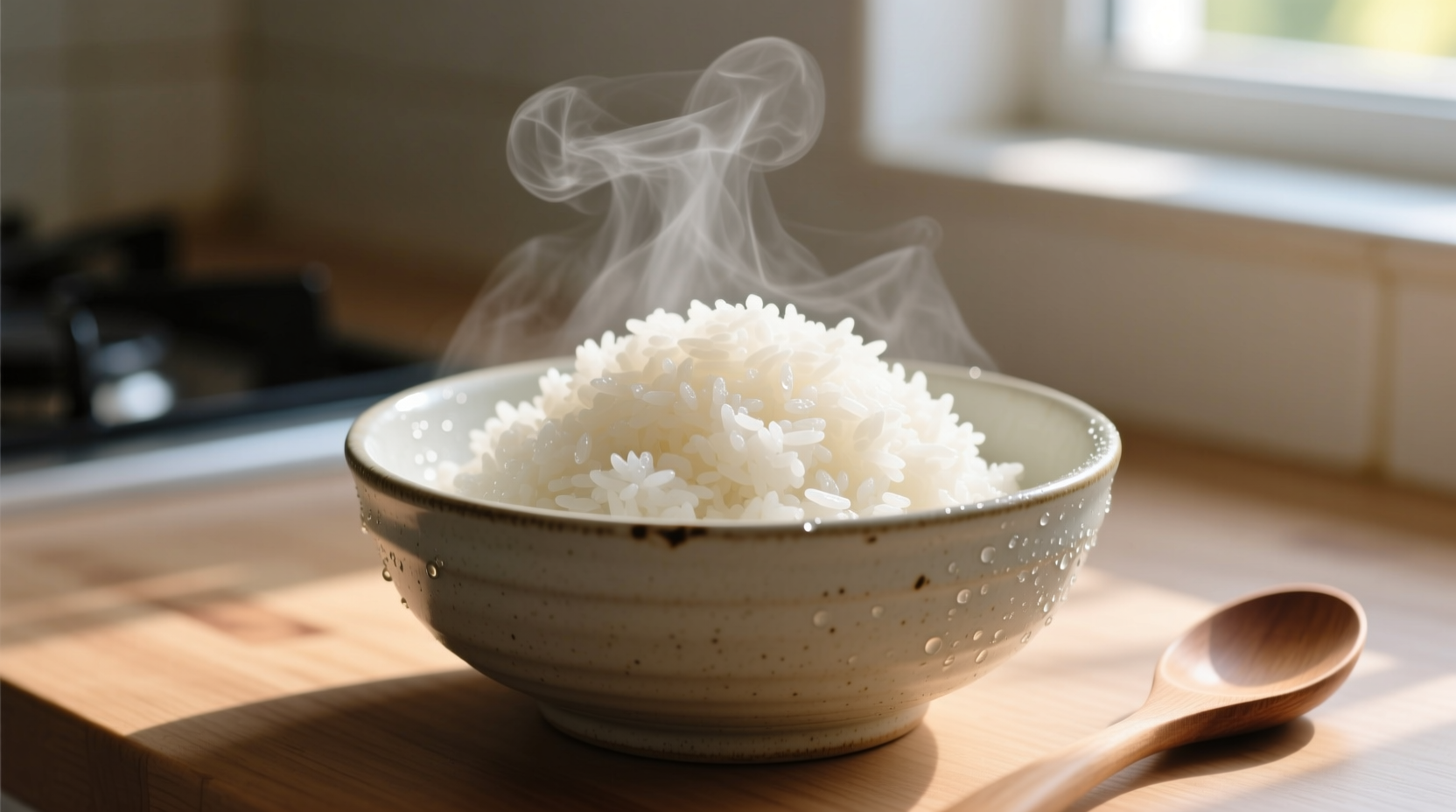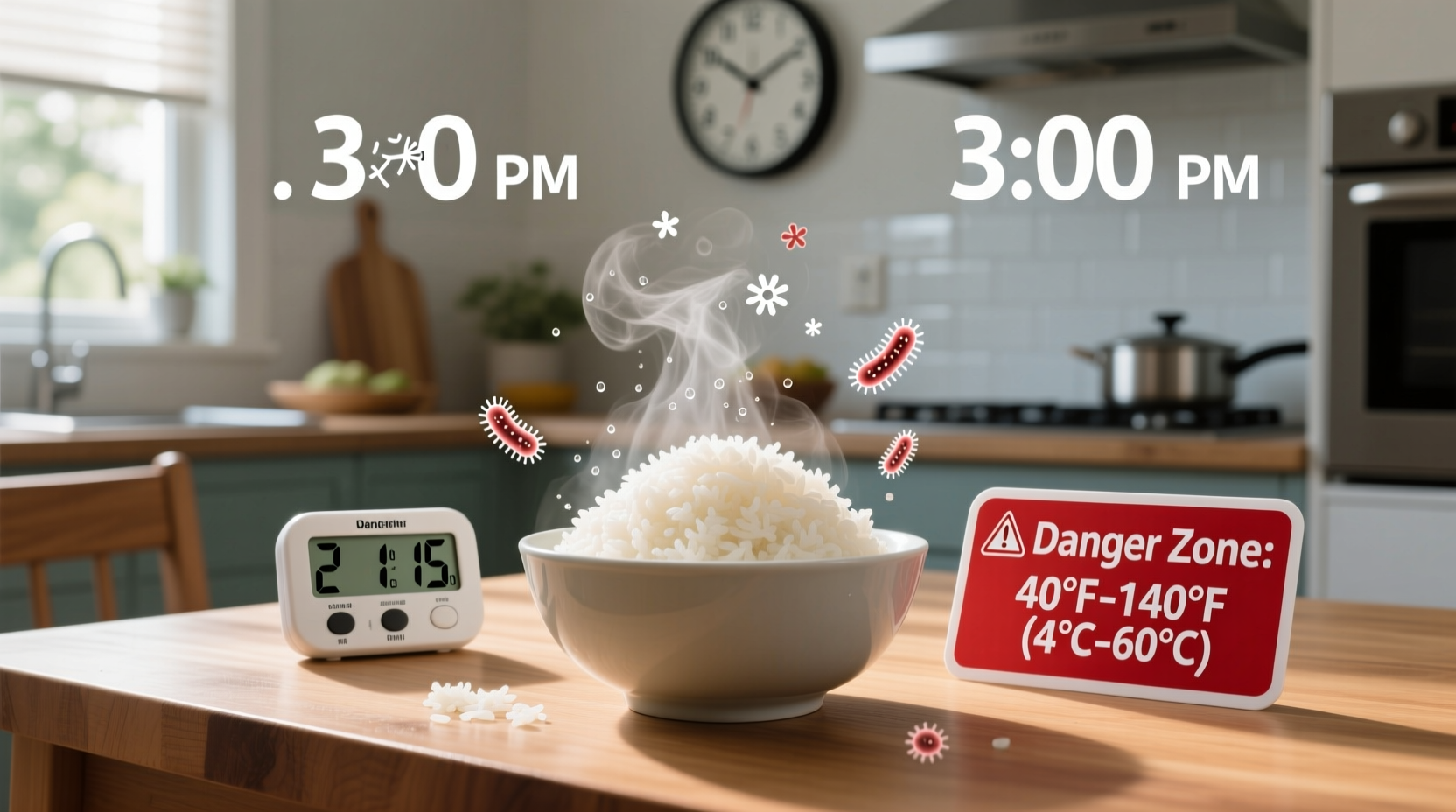Cooked rice should not sit out at room temperature for more than 2 hours. If the ambient temperature is above 90°F (32°C), refrigerate within 1 hour to prevent foodborne illness. This critical food safety guideline comes from the USDA Food Safety and Inspection Service, as cooked rice creates an ideal environment for Bacillus cereus bacteria growth when left in the temperature danger zone (40°F-140°F / 4°C-60°C).
Ever wondered why your leftover rice sometimes causes stomach upset? The clock starts ticking the moment your rice comes off the heat. As a culinary professional with extensive kitchen safety experience, I've seen how easily rice-related food poisoning occurs when basic food safety rules get overlooked. This guide delivers science-backed storage guidelines you can trust, helping you enjoy your favorite rice dishes without risking illness.
Why Rice Requires Special Food Safety Attention
Unlike many cooked foods, rice presents unique food safety challenges due to its relationship with Bacillus cereus bacteria. These resilient bacteria exist naturally in soil and can contaminate rice while it's growing. The spores survive the cooking process, lying dormant until conditions become favorable for growth.
"Cooked rice provides the perfect environment for Bacillus cereus to multiply," explains Dr. Sarah Thompson, food microbiologist at the FDA Center for Food Safety and Applied Nutrition. "The moisture content and neutral pH create ideal conditions, especially when combined with warm temperatures."
| Storage Condition | Safe Duration | Maximum Bacterial Growth Risk |
|---|---|---|
| Room temperature (below 90°F/32°C) | 2 hours maximum | Moderate to high after 2 hours |
| Room temperature (above 90°F/32°C) | 1 hour maximum | High after 1 hour |
| Refrigerated (40°F/4°C or below) | 3-4 days | Low with proper storage |
| Frozen (-0°F/-18°C or below) | 1-2 months | Very low |
The Science Behind Rice Food Safety
Understanding why rice requires special handling begins with recognizing how Bacillus cereus operates. These bacteria produce two types of toxins:
- Emetic toxin - causes vomiting, forms during storage at room temperature
- Diarrheal toxin - causes diarrhea, produced when contaminated food is consumed
The emetic toxin is particularly concerning because it's heat-stable - meaning reheating contaminated rice won't make it safe to eat. This explains why simply warming up improperly stored rice doesn't eliminate food poisoning risk.
Practical Rice Storage Protocol
Follow this step-by-step approach to keep your cooked rice safe:
- Cool rapidly - Spread cooked rice in a thin layer on a baking sheet to cool faster (reduces time in danger zone)
- Refrigerate promptly - Transfer to airtight containers within the 2-hour window (1 hour in hot conditions)
- Label containers - Include cooking date to track freshness
- Reheat properly - Heat to 165°F (74°C) throughout when serving leftovers
- Discard when uncertain - When in doubt, throw it out - don't risk food poisoning

Recognizing Unsafe Rice: Warning Signs
While following time guidelines is crucial, also watch for these visual and sensory indicators that rice has spoiled:
- Unpleasant odor - Sour or funky smell indicates bacterial growth
- Visible mold - Any fuzzy spots mean immediate discard
- Unusual texture - Slimy or excessively hard rice
- Discoloration - Yellowish or grayish hues
Remember that Bacillus cereus contamination often occurs without visible signs. If rice has been in the danger zone beyond recommended times, assume it's unsafe regardless of appearance.
Special Considerations for Different Rice Types
While the 2-hour rule applies universally to cooked rice, certain varieties require extra attention:
- Fried rice - Higher risk due to egg content; follow same 2-hour rule but consume sooner
- Rice salads - Acidic ingredients like vinegar slow but don't stop bacterial growth
- Sushi rice - Vinegar content provides some protection but doesn't eliminate risk
- Congee/rice porridge - Higher moisture content accelerates spoilage
The USDA Food Safety and Inspection Service confirms that all cooked rice varieties follow the same safety guidelines regardless of preparation method. The critical factor is time spent in the temperature danger zone, not the rice type itself.
Reheating Leftover Rice Safely
Proper reheating technique matters when serving leftover rice:
- Add 2 tablespoons water per cup of rice to restore moisture
- Heat thoroughly to 165°F (74°C) throughout
- Stir frequently for even heating
- Consume immediately after reheating
Never reheat rice multiple times, as this increases food safety risks with each cycle. The FDA Food Code specifies that properly stored rice should only be reheated once before discarding any leftovers.
Common Myths About Rice Storage Debunked
Several misconceptions persist about rice safety that need clarification:
- "Rice left overnight is fine if it smells okay" - False. Bacillus cereus produces heat-stable toxins that don't affect smell or appearance
- "Adding vinegar makes rice safe for longer" - Partially true for sushi rice, but doesn't eliminate bacterial growth risks
- "Reheating kills all bacteria" - Misleading. While heat kills bacteria, it doesn't destroy pre-formed toxins
- "Cold rice is always safe" - False. Refrigeration slows but doesn't stop bacterial growth
These myths contribute to the approximately 63,000 annual cases of Bacillus cereus food poisoning in the United States, according to CDC surveillance data.
Food Safety Timeline: What Happens to Rice Over Time
Understanding the bacterial growth timeline helps visualize why timing matters:
- 0-30 minutes after cooking: Safe period - bacteria remain dormant
- 30-60 minutes: Spores begin activating as temperature drops
- 1-2 hours: Bacterial multiplication accelerates exponentially
- 2-4 hours: Toxin production begins reaching dangerous levels
- 4+ hours: High risk of foodborne illness even after proper reheating
This timeline explains why the 2-hour rule exists - it represents the critical threshold before toxin production becomes significant.











 浙公网安备
33010002000092号
浙公网安备
33010002000092号 浙B2-20120091-4
浙B2-20120091-4